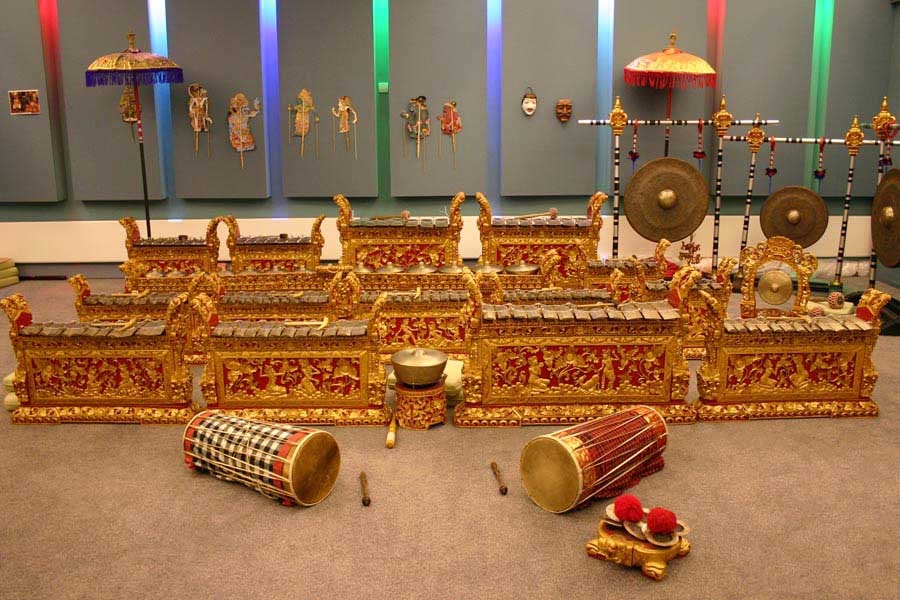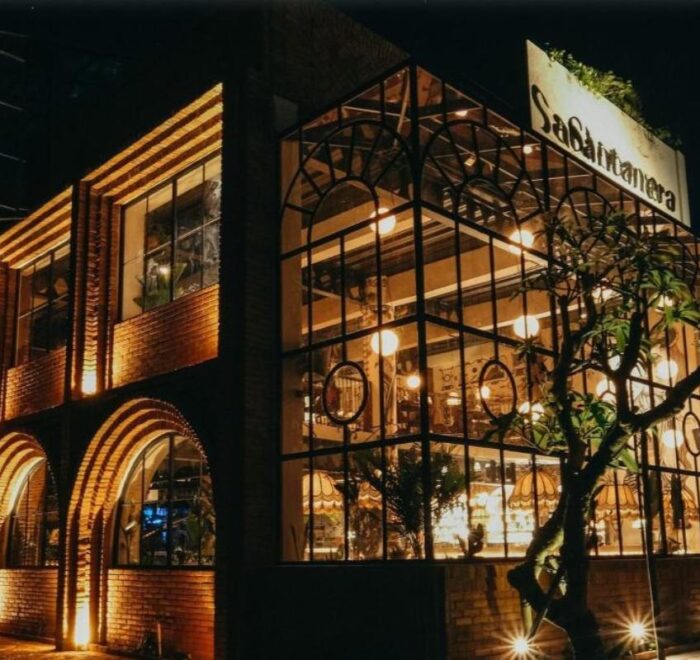Gamelan Bali is a central element of Balinese culture, known for its rich sounds and spiritual significance, often referred to as the music of Bali. This traditional music features a unique blend of percussion instruments like gongs and metallophones. It plays a vital role in ceremonies and celebrations across the island, making it an integral part of Indonesian culture and daily Balinese life. In this article, we will explore the distinctive features of Balinese gamelan instruments, and Gamelan Bali’s importance in both community and spiritual events.
Key Takeaways
- Balinese Gamelan is a vital aspect of Bali’s cultural identity, characterised by energetic rhythms, communal performances, and a profound connection to spirituality.
- Around 1,500 gamelan orchestras exist in Bali, emphasising its significance in cultural events and the communal spirit that underlies traditional music education.
- The influence of Balinese Gamelan extends globally, impacting modern music and inspiring composers, while its preservation is ensured through education and cultural festivals.
Gamelan Bali: Exploring the Vibrant Sounds of Traditional Balinese Music
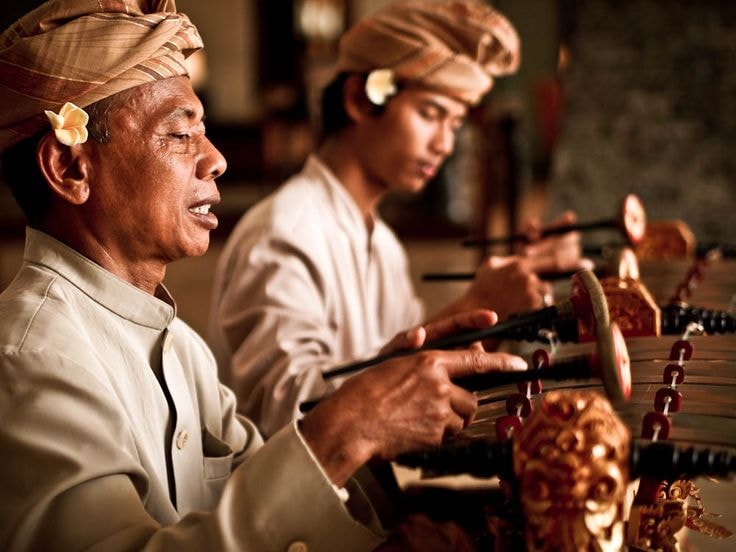
Source : flickr.com
Balinese Gamelan is more than just music; it’s an experience, a communal celebration of life and spirituality. This traditional Indonesian music genre features a unique blend of percussion instruments, primarily gongs and metallophones, which create a rich auditory experience central to Balinese ceremonies and celebrations. The vibrant and dynamic sounds of Balinese Gamelan are renowned for their ability to captivate audiences and elevate the spiritual atmosphere of rituals and community gatherings on the island.
The Balinese approach music as a communal experience, with traditional performances often creating an exuberant atmosphere of sound and celebration. This communal nature is reflected in the high concentration of gamelan orchestras on the island, with around 1,500 orchestras for approximately three million residents, making Bali the epicentre of gamelan orchestras in the world. These musical ensembles are in high demand for significant cultural events, including blessings for new businesses and homes, showcasing the integral role they play in Balinese society.
From a young age, Balinese children are encouraged to participate in gamelan bands and traditional dance within their village, fostering a deep connection to Bali music and their cultural heritage. Every village in Bali typically has multiple music clubs that rehearse regularly for temple festivals and performances, ensuring that the traditions of Balinese Gamelan are passed down through generations.
Balinese Gamelan is distinguished by its vigorous rhythms and harmony, contrasting with the gentler tones of Javanese gamelan. This Bali music tradition is predominantly indigenous, with roots tracing back to pre-Hindu-Buddhist kingdoms, making it a vital link to Bali’s ancient cultural practices.
As we delve deeper into the essence of Balinese Gamelan, we will explore its key Balinese instruments, unique characteristics, and the various types of ensembles that bring this vibrant Bali music to life.
Introduction
Gamelan is not just music; it is the heartbeat of Bali’s cultural identity and ceremonial traditions. The most popular form of gamelan in Bali today is the Gamelan Gong Kebyar, known for its vibrant and dynamic musical characteristics that captivate both local and international audiences. This integral part of Balinese culture is deeply embedded in the community, with local gamelan bands often formed in villages, encouraging participation from children and adults alike.
From a young age, Balinese children are introduced to this musical tradition, fostering a lifelong connection to their cultural heritage. The vibrant performances that are a hallmark of Bali’s music scene attract audiences from around the world, highlighting the island’s rich cultural heritage and the communal spirit that underpins it.
As we explore the essence of Balinese Gamelan, we will uncover the spiritual and communal aspects that make it such a unique part of Bali’s culture.
The Essence of Balinese Gamelan
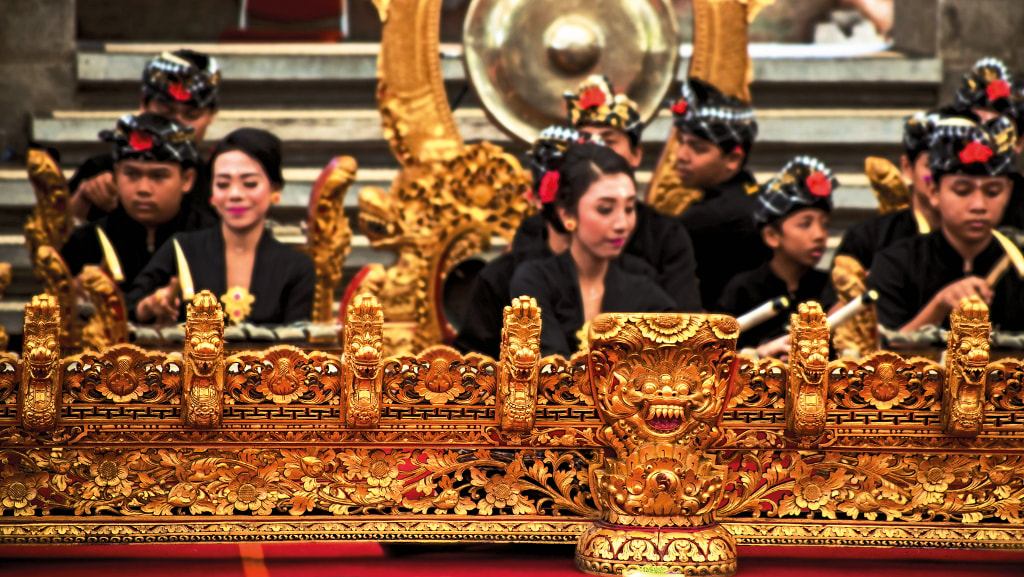
Source : nowbali
At the heart of Balinese Gamelan lies a profound connection to spirituality and community, Bali’s intangible cultural heritage. This traditional music genre serves not only as a form of entertainment but also as a means of spiritual expression, linking performers and audiences to their deities and cultural traditions. The ensemble includes a variety of instruments such as metallophones, gongs, and flutes, creating a rich auditory experience that is central to Balinese religious ceremonies and celebrations.
The demand for gamelan orchestras during significant cultural events, ranging from blessings for new businesses and homes to death ceremonies, underscores the vital role they play in Balinese society. The vigorous rhythms and harmony of Balinese Gamelan distinguish it from the gentler tones of Javanese gamelan, adding a dynamic and energetic quality to the music. This unique blend of percussion instruments, primarily gongs and metallophones, creates a vibrant soundscape that is both captivating and spiritually uplifting.
Music in Bali is approached as a communal experience, with performances often creating an exuberant atmosphere of sound and celebration. The musical tradition of gamelan is predominantly indigenous, with roots tracing back to pre-Hindu-Buddhist kingdoms, making it a vital link to Bali’s ancient cultural practices. Records indicate that Balinese Gamelan has been played since at least the 2nd century AD, highlighting its long-standing presence in the island’s cultural heritage.
Bali boasts the highest concentration of gamelan orchestras in the world, with around 1,500 orchestras for approximately three million residents. This remarkable density reflects the deep cultural significance of gamelan music on the island and its integral role in community life.
As we explore the key traditional musical instruments in Balinese Gamelan ensembles, we will gain a deeper understanding of the sounds that define this timeless musical tradition.
Key Instruments in Balinese Gamelan Ensembles
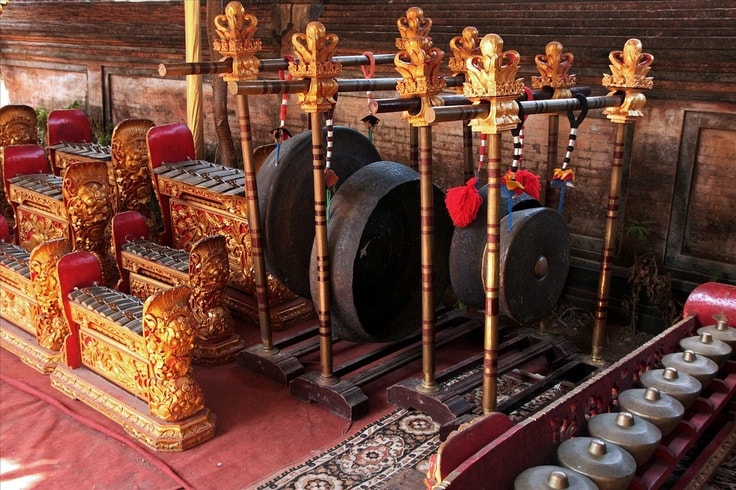
Source : pinterest.com
Balinese gamelan ensembles are characterised by a diverse array of percussive instruments that create intricate melodies. Common Balinese gamelan instruments include metallophones, gongs, and bamboo flutes, each contributing to the rich auditory tapestry of gamelan music. Gongs, in particular, are vital in gamelan compositions, serving as the backbone of both traditional and contemporary Balinese music.
The kendang, a traditional two-headed drum, and the ceng-ceng, a cymbal-like instrument, also play significant roles in the ensemble. Let’s delve into the details of some of these key instruments.
Reyong
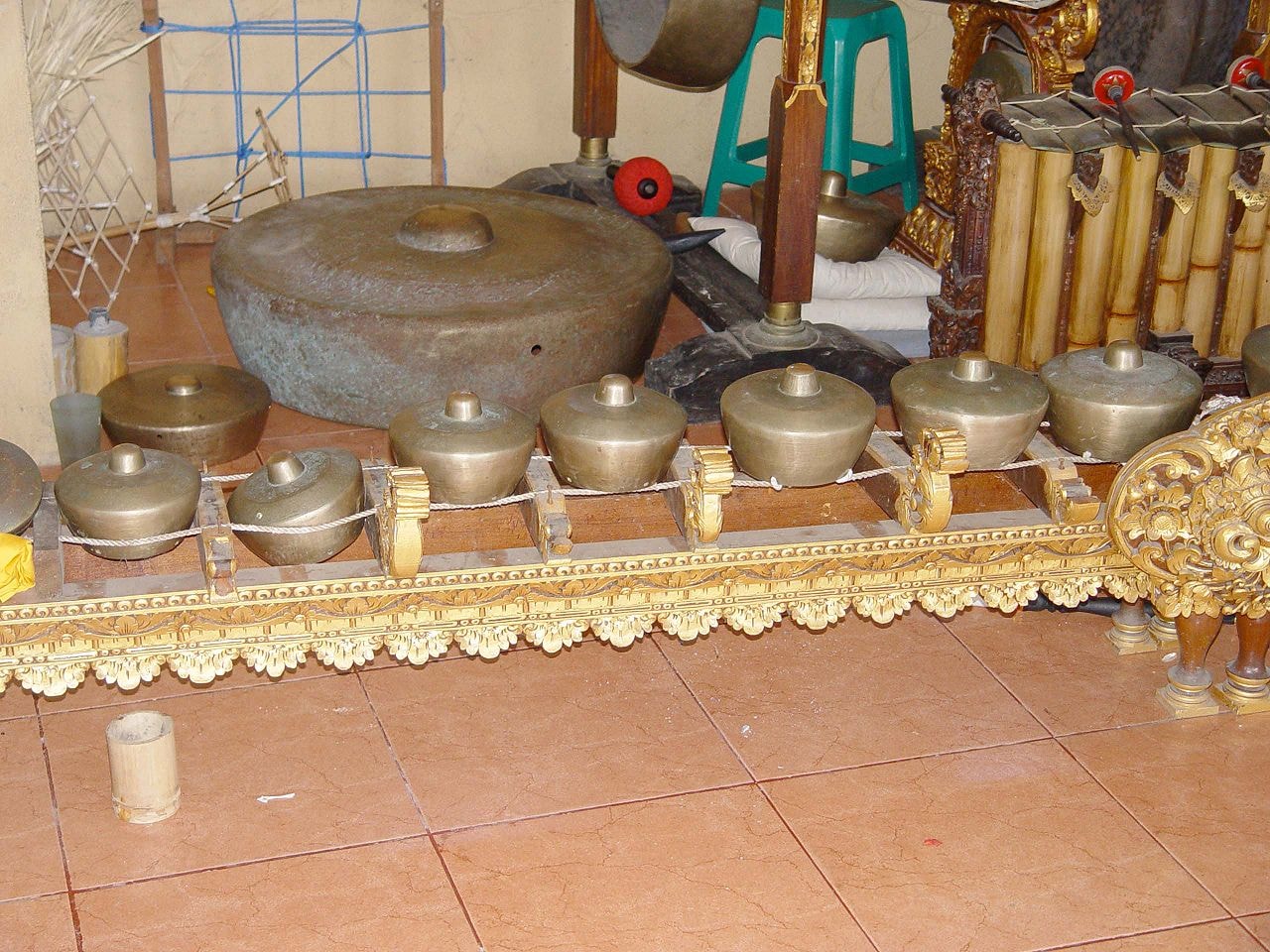
Source: wikipedia.org
The reyong, an essential component of the Balinese gamelan ensemble, consists of small gongs arranged in a row that produce a range of unique tones. This Balinese gamelan instrument is played by multiple musicians who coordinate to create intricate rhythmic patterns, adding depth and complexity to the music. The reyong’s distinctive sound is a hallmark of Balinese gamelan, contributing to the ensemble’s vibrant and dynamic quality.
The collaborative nature of playing the reyong reflects the communal spirit of Balinese music, where each musician’s contribution is vital to the overall performance. This instrument’s role in the ensemble underscores the importance of teamwork and coordination in creating the rich, textured soundscapes that define Balinese gamelan music.
Trompong
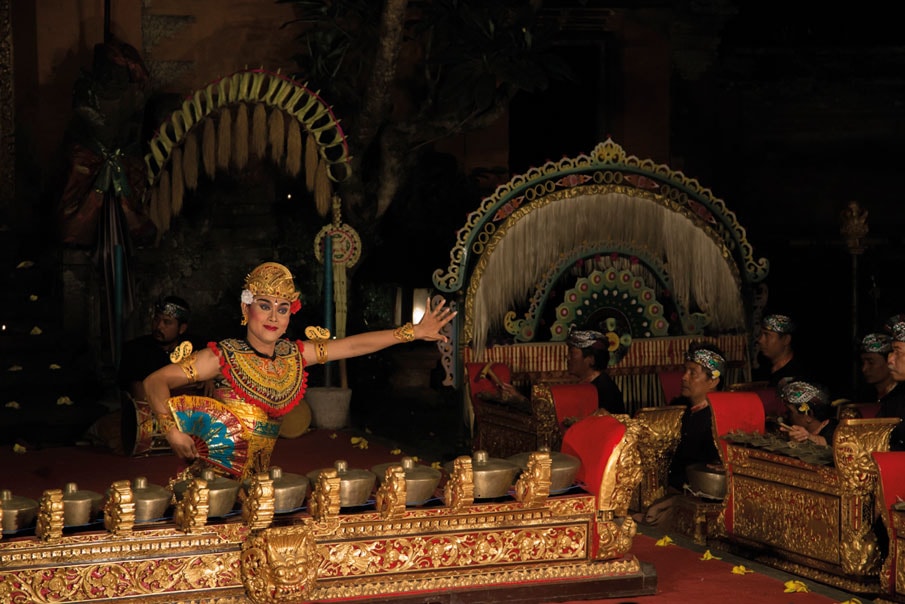
Source: nowbali.co.id
The trompong, another key instrument in Balinese gamelan, consists of 10 gongs arranged in a row. This instrument is often used to embellish the melody in ceremonial music, adding a layer of complexity and richness to the overall sound.
The trompong’s contribution to the ensemble highlights the intricate interplay of other forms of instruments in creating the vibrant and dynamic sound of Balinese gamelan.
Gangsa
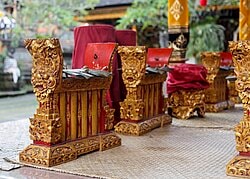
Source: wikipedia.org
The gangsa, characterised by its unique sound resembling a bamboo xylophone with horizontally arranged metal plates, plays a pivotal role in Balinese gamelan ensembles. Typically played by the ensemble leader, the gangsa’s melodic lines and rhythmic patterns are essential to the overall texture of the music.
This instrument’s distinctive sound adds to the rich, layered quality of Balinese gamelan music, showcasing the beauty of traditional musical instrument and gamelan instruments.
Unique Characteristics of Balinese Gamelan Music
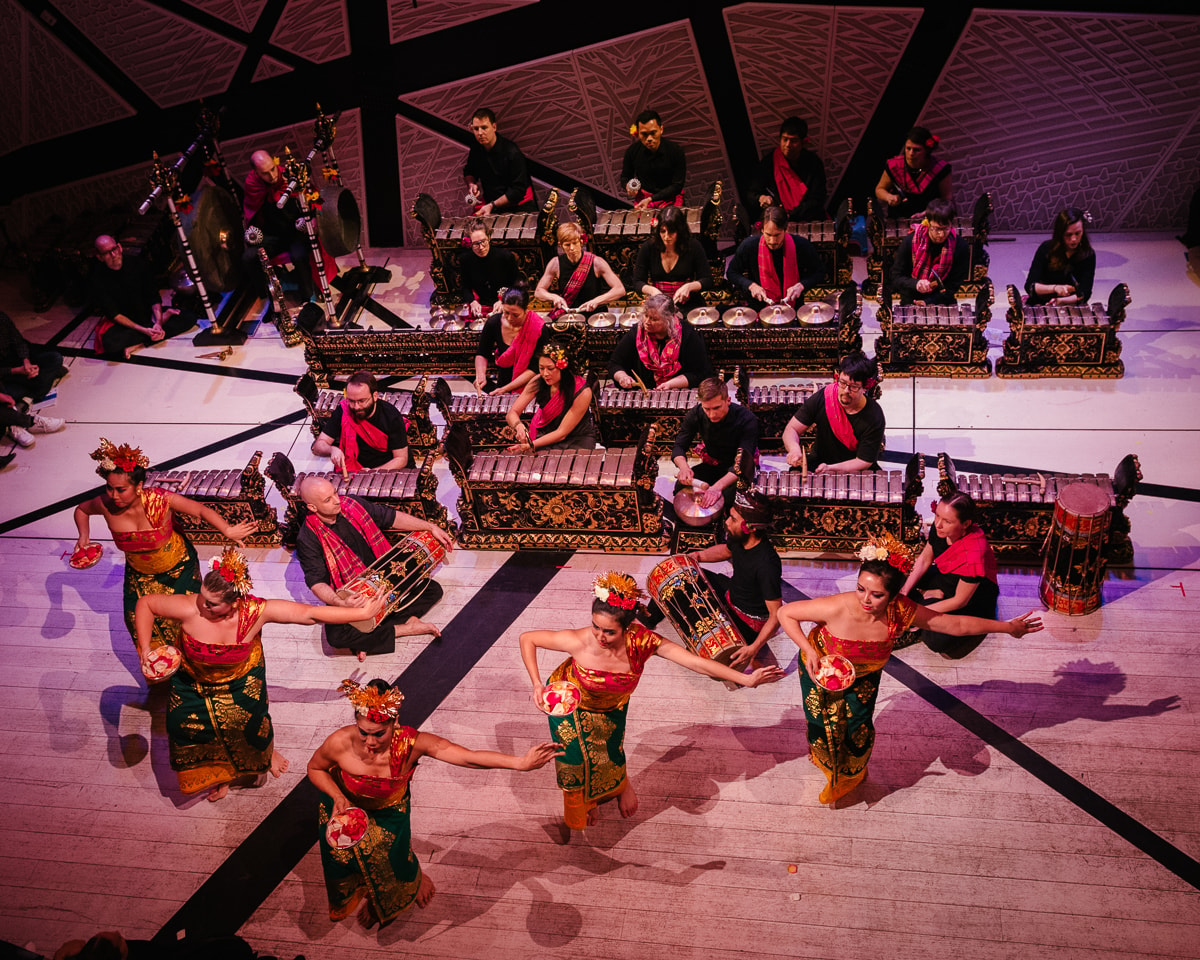
Source : dharmaswara.org
Balinese Gamelan is renowned for its unique characteristics that set it apart from other Indonesian music forms. Its energetic tempo and complex rhythm structures create powerful, dynamic tones with faster beats, contributing to its distinctiveness. The music is organised with a colotomic structure, featuring cyclical rhythms that are repeated throughout each piece.
Let’s explore these unique features in more detail.
Fast-Paced Rhythms
One of the defining features of Balinese gamelan music is its fast-paced rhythms. Unlike the gentler tones of Javanese gamelan, Balinese gamelan is characterised by vigorous rhythms and harmony, creating a lively and cheerful atmosphere. The energetic tempo of the music is often reflected in the accompanying dance performances, where precise and rapid movements mirror the music’s intensity.
These fast-paced rhythms are not just about speed; they embody the exuberant spirit of the Balinese people. The rapid beats and vibrant melodies create an atmosphere of celebration, drawing both performers and audiences into a shared experience of sound and movement. This lively tempo is a testament to the dynamic nature of Balinese culture and its expression through music.
Interlocking Patterns
Another unique characteristic of Balinese gamelan music is the use of intricate interlocking patterns. Known as ‘kotekan,’ these patterns involve two interdependent musical lines that complement each other, forming a complete rhythmic structure. The interplay of these interlocking patterns adds depth and complexity to the overall sound, creating a rich and textured musical experience.
The technique of kotekan showcases the high level of coordination and skill required by gamelan musicians. Each player must be attuned to the others, ensuring that their parts fit seamlessly together to create the intricate patterns that define Balinese gamelan music. This collaborative approach to music-making highlights the communal spirit of Balinese culture and the importance of teamwork in achieving a harmonious sound.
Use in Rituals and Ceremonies
Balinese gamelan serves not only as entertainment but also as a vital component of religious practices and cultural expressions. Gamelan music plays a crucial role in various Balinese Hindu rituals, helping to connect with deities and ancestors. Sacred gamelan ensembles are integral to Balinese temple ceremonies, reflecting spiritual and cultural traditions. The traditional gamelan music has evolved into various forms, each suited to different ceremonial contexts, such as weddings and cremations in a more modern Bali.
The inclusion of gamelan music in rituals adds a profound emotional and spiritual dimension to these events. Whether it is a temple ceremony, a wedding, or a cremation, the music enhances the atmosphere, making the occasion more meaningful and memorable. The powerful sounds of the gamelan resonate with the participants, creating a deep connection to the cultural and spiritual heritage of Bali.
Types of Balinese Gamelan Ensembles
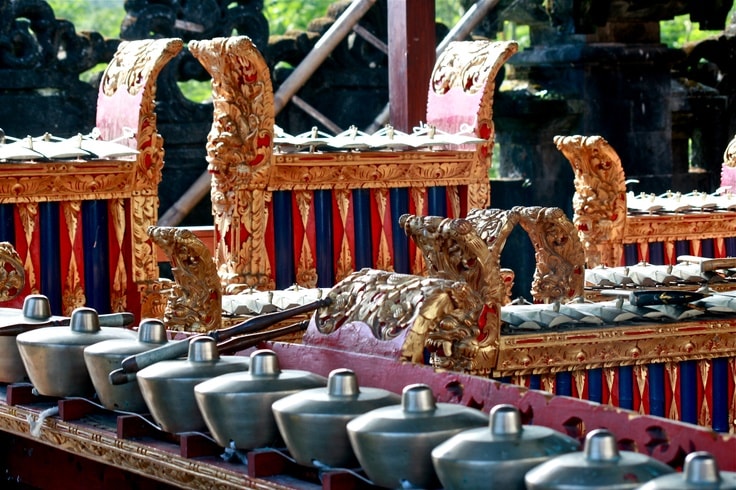
Source : id.pinterest.com
The tradition of Balinese Gamelan incorporates various styles, each with distinct characteristics and purposes, often linked to cultural and ceremonial events. Balinese gamelan is distinguished by its louder and more aggressive sound compared to other Indonesian Gamelan, such as Sundanese and Javanese styles.
Let’s explore some of the main types of Balinese gamelan ensembles.
Gamelan Gong Kebyar
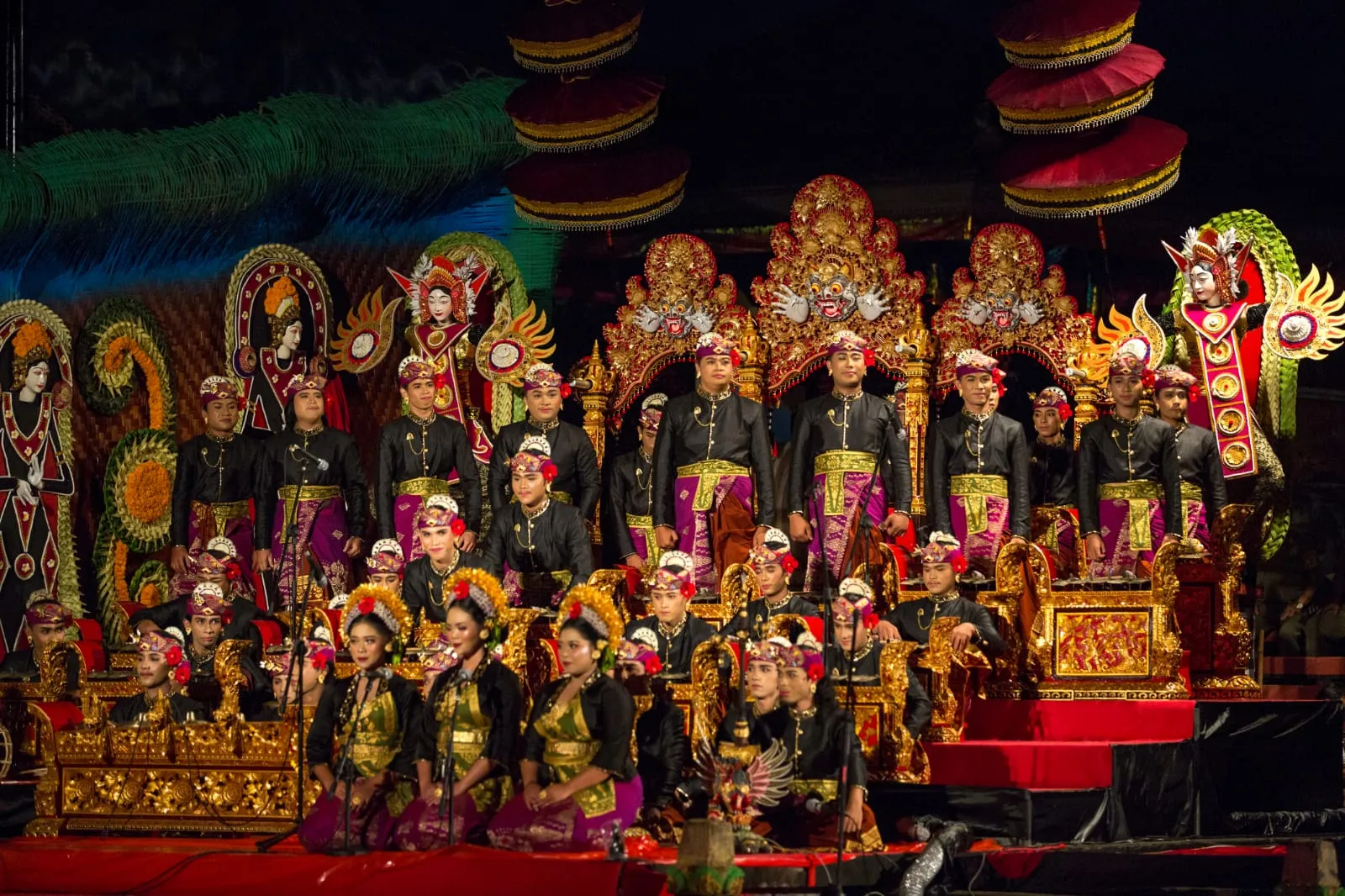
Source: balinesia.id
Gamelan Gong Kebyar is one of the most vibrant and dynamic forms of Balinese gamelan. Known for its energetic and fast-paced style, it has become a prime representation of modern Balinese music in performing arts. The instruments used in Gamelan Gong Kebyar are notable for being lighter, faster-reacting, and more wide-ranging, allowing for rapid changes in tempo and dynamics.
This type of gamelan is often performed during religious ceremonies, temple rituals, marriages, tooth-filing celebrations, and blessings, showcasing its versatility and importance in various cultural contexts. The vibrant sounds of Gamelan Gong Kebyar captivate audiences and bring a sense of excitement and energy to any event, making it a beloved form of traditional Balinese music.
Gamelan Angklung
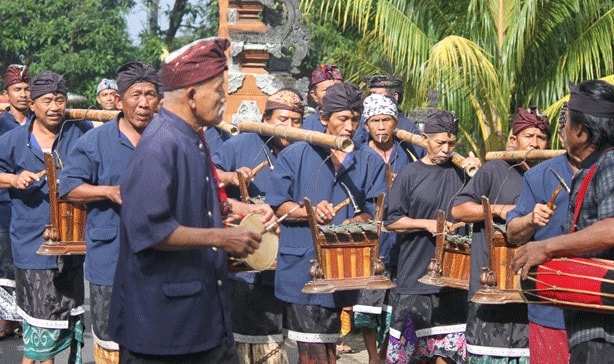
Source: blibagus.com
Gamelan Angklung is one of the oldest Balinese ensembles, highlighting its long-standing tradition and cultural importance. This ensemble is known for its sentimental and bittersweet sound, often used in cremation and death ceremonies to reflect the somber yet reflective nature of these religious ceremonies. The historical significance of Gamelan Angklung is reflected in its role in various traditional ceremonies, making it a vital part of Balinese cultural heritage.
The use of Gamelan Angklung in community events and religious ceremonies underscores its importance in Balinese society. The music’s emotional resonance enhances the spiritual atmosphere of these occasions, creating a profound connection between the participants and their cultural and spiritual roots.
Gamelan Jegog
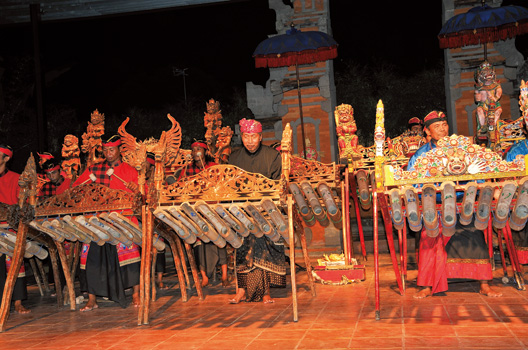
Source: balicultureinformation
Gamelan Jegog is known for its deep, resonant sounds, produced by large bamboo instruments. This type of gamelan is unique to the western part of Bali and is often associated with communal competitions known as Mabarung, where different groups perform and compete. These performances showcase the entertainment value and communal spirit of Gamelan Jegog, reflecting the vibrant cultural life and cheerful atmosphere of Bali.
The dynamic and powerful sounds of Gamelan Jegog add a distinctive flavour to Balinese music, making it a popular choice for various cultural festivals and events. The communal aspect of Mabarung highlights the importance of teamwork and collaboration in Balinese gamelan performances, fostering a sense of unity and shared cultural identity between the Balinese people.
Experiencing Balinese Gamelan Performances
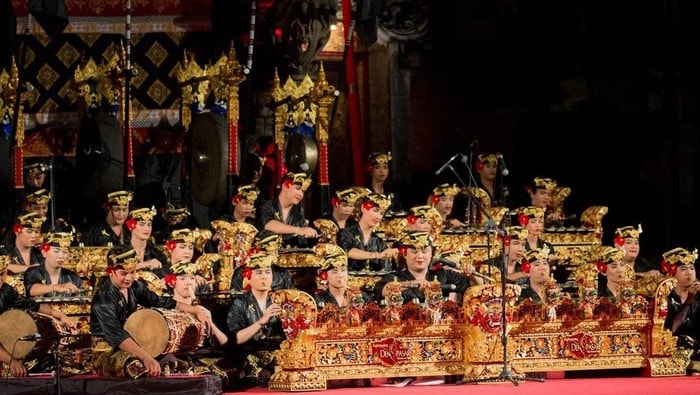
Source : detik.com
Experiencing a live Balinese gamelan performance is a sensory delight that offers a deep dive into the island’s rich cultural heritage. Nightly performances of Balinese gamelan ensembles occur regularly, providing ample opportunities for visitors to immerse themselves in the vibrant sounds and dynamic rhythms of this traditional music.
Let’s explore some of the key venues where you can witness these captivating performances.
Ubud Water Palace Performances
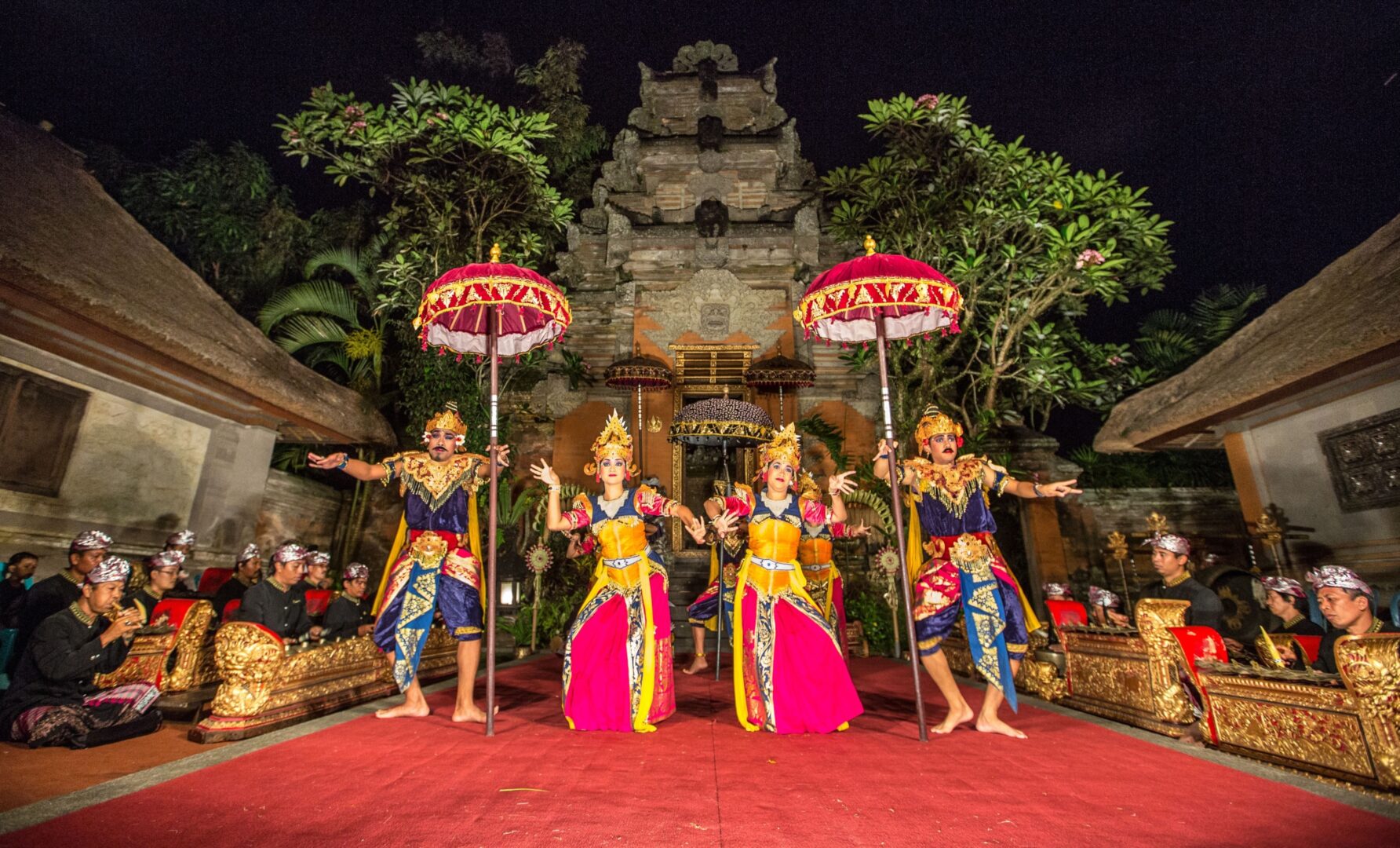
Source: expedia.co.id
The Ubud Water Palace is a magical venue where you can witness the talents of children alongside local adults in their gamelan ensemble. This setting offers a unique opportunity to experience traditional Balinese music and sacred dances in a beautiful, historic location. The performances here are a testament to the community’s dedication to preserving and showcasing their cultural heritage.
At the Ubud Water Palace, the participation of children in the gamelan ensemble highlights the importance of passing down these traditions to younger generations. The inclusion of young musicians in these performances ensures that the rich heritage of Balinese gamelan music continues to thrive and evolve in modern Bali.
Ubud Palace Nightly Shows
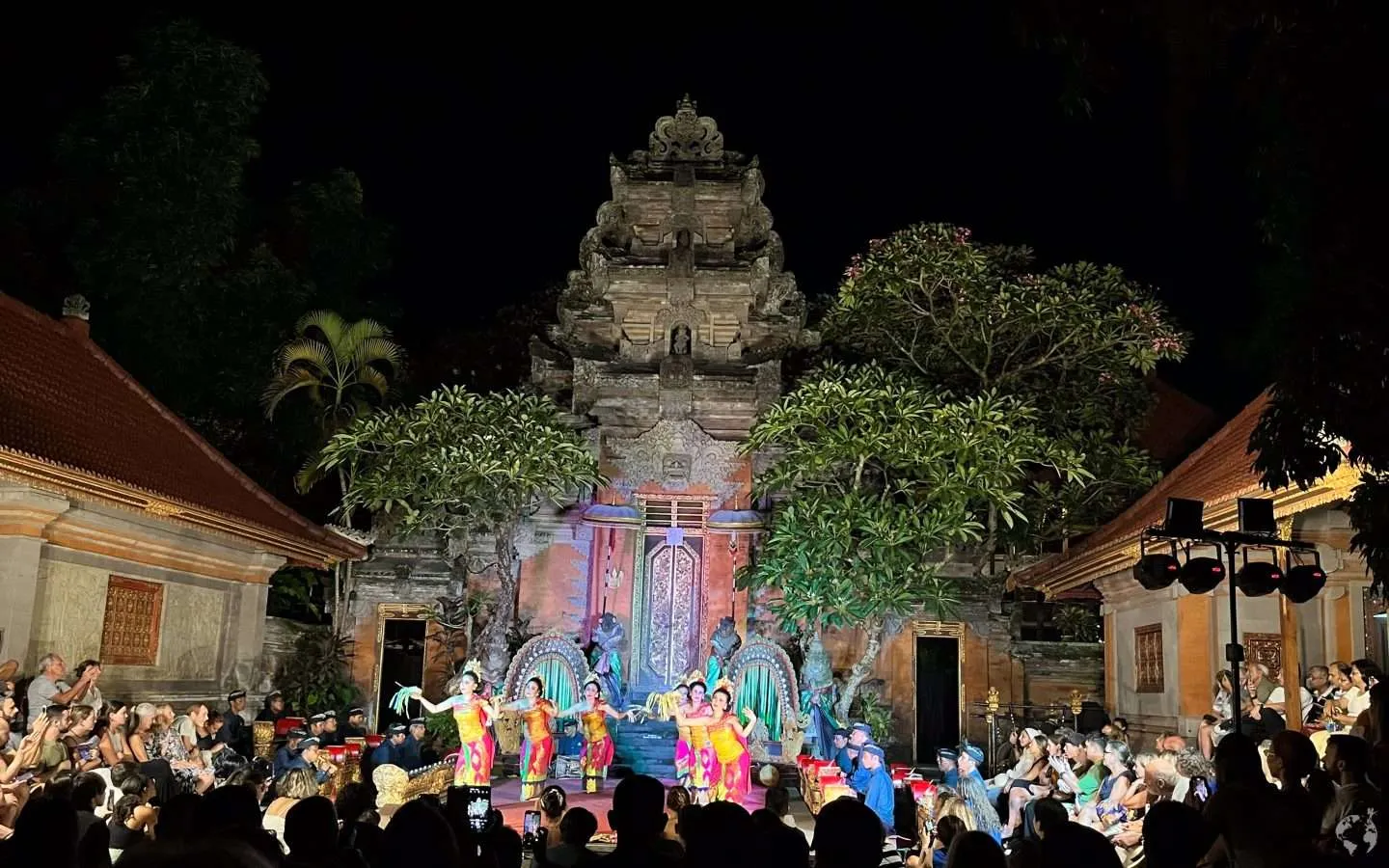
Source: amilliontravels.com
Ubud Palace is another iconic venue where you can experience nightly gamelan performances. Attendees at the Ubud Palace performances receive a booklet explaining the performance in English, enhancing their understanding and appreciation of the Bali music and sacred dances.
These nightly shows provide an intimate and immersive experience of the music of Bali and its intricate melodies.
Tanah Lot Temple Performances
The iconic Tanah Lot Temple hosts various gamelan performances, adding to its allure as a cultural landmark. Known for its stunning coastal views and rich cultural significance, Tanah Lot Temple offers a breathtaking backdrop for experiencing the vibrant sounds of the Balinese gamelan orchestra.
These performances highlight the deep connection between Balinese music and the island’s spiritual and natural landscape.
Influence of Balinese Gamelan on Modern Music
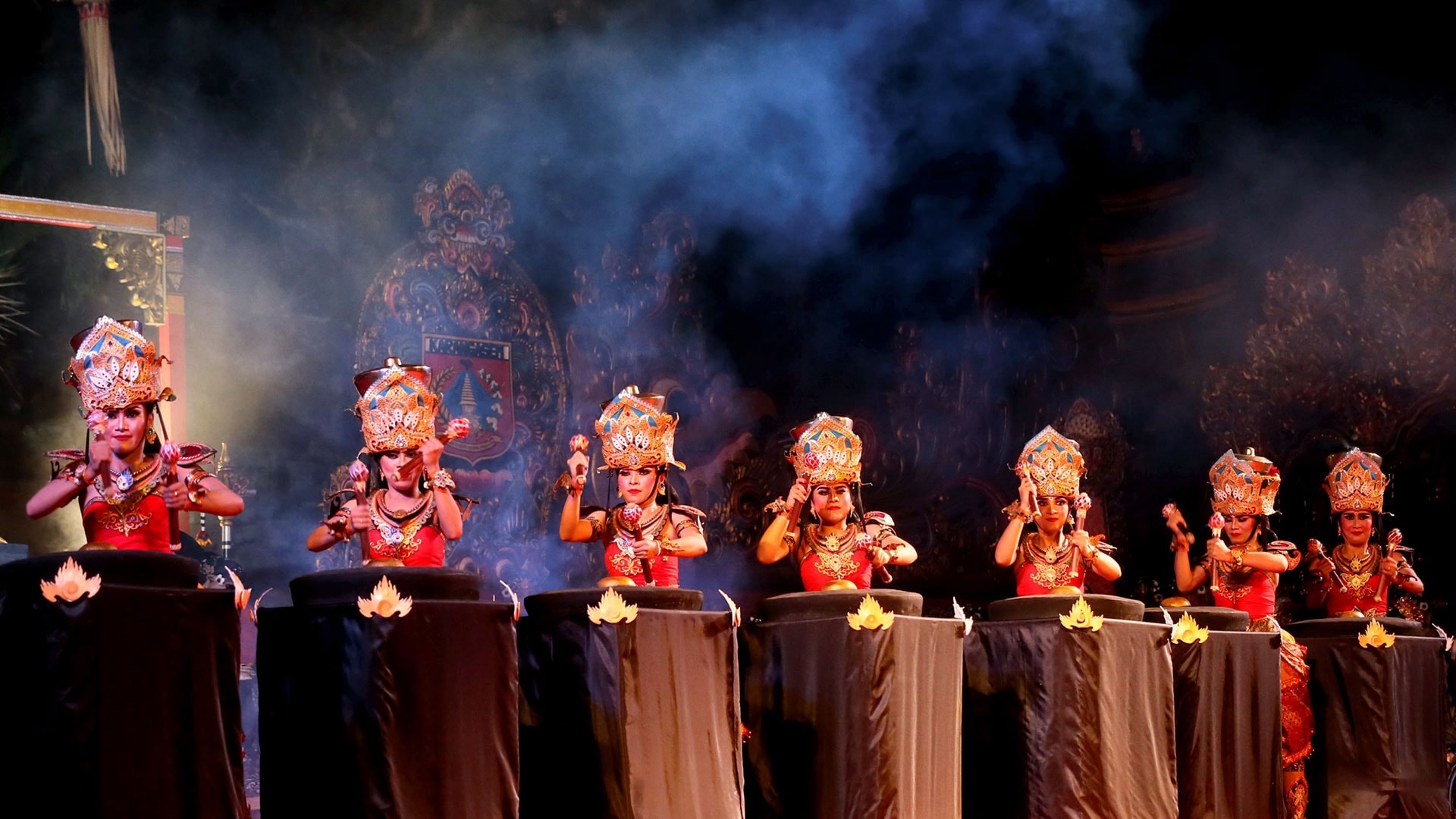
Source : interaktif.kompas.id
The influence of Balinese gamelan extends far beyond the island’s shores, impacting modern music and art forms across the globe. This traditional music has integrated into contemporary genres, influencing diverse composers and enriching various musical landscapes.
Let’s explore how Balinese gamelan has inspired both Western composers and modern music genres.
Western Composers
Several Western composers have been captivated by the unique tonal qualities of gamelan music, incorporating its elements into their compositions. Claude Debussy was among the first to be inspired by gamelan music after hearing it at the 1889 Paris Exposition. His fascination with the exotic sounds of gamelan influenced his compositions, adding a distinct flavour to his works.
Other composers like Leopold Godowsky, Henry Cowell, and Colin McPhee also drew inspiration from gamelan music. McPhee, in particular, dedicated years to studying gamelan, resulting in his work ‘Balinese Ceremonial Music’ for two pianos.
The integration of gamelan elements into Western music showcases the versatility and global appeal of this traditional art form.
Fusion with Modern Genres
Gamelan music has also found its way into modern genres, blending seamlessly with styles like electronic music and punk. In Bali, this fusion has created innovative soundscapes that attract diverse audiences and enrich the island’s music scene. The combination of traditional rhythms and instruments with modern soundscapes highlights the adaptability and enduring relevance of gamelan music.
The incorporation of gamelan into electronic genres often involves using traditional rhythms and instruments to create unique and captivating soundscapes. This fusion not only preserves the essence of Balinese gamelan but also introduces it to new audiences, ensuring its continued evolution and popularity.
Sacred Gamelans of Temple Rituals
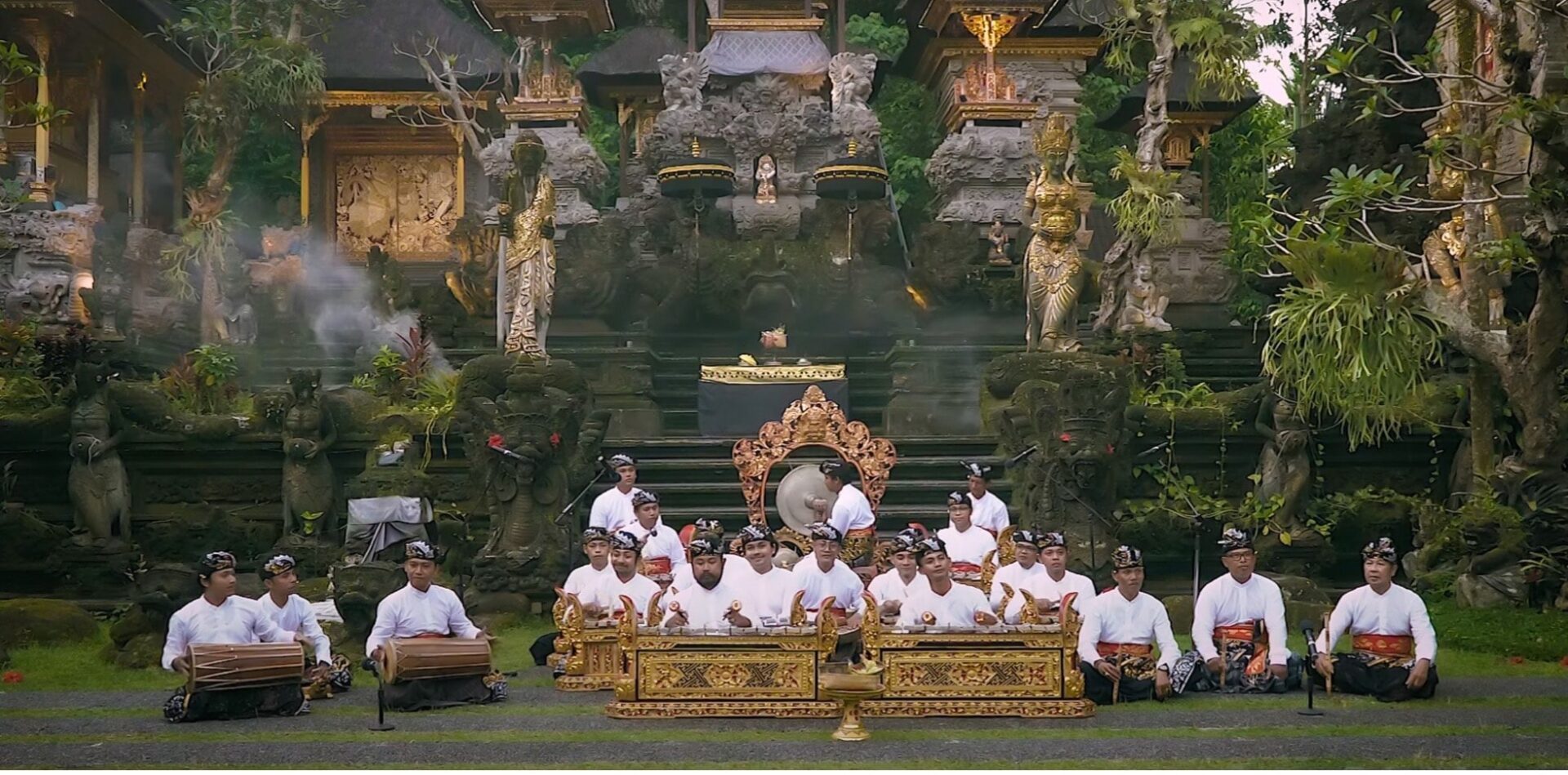
Source : cosmopolisfestival.hkust.edu.hk
Sacred gamelan ensembles play a crucial role in Balinese hindu rituals, enhancing the spiritual atmosphere of these ceremonies. The gamelan gong gede and gamelan angklung are among the most significant sacred ensembles, each with its unique role and historical significance.
Let’s delve into the details of these sacred gamelans.
Gong Gede
The gong gede ensemble is an ancient form of Balinese gamelan that has roots in traditional temple music. This ensemble, possibly dating back to the 15th century, is known for its deep, resonant sounds and requires 40 players to perform. During temple rituals, the gong gede creates an auditory backdrop that supports the spiritual experiences of the participants.
The gong gede ensemble is essential in maintaining the cultural and religious traditions of Hindu ceremonies in Bali, enhancing the spiritual atmosphere and connecting participants to their deities and ancestors. The powerful sounds of the gong gede resonate deeply with the participants, creating a profound sense of reverence and spirituality.
Gambuh
The gambuh court dance theatre is another significant aspect of Balinese gamelan, telling stories about the legendary Hindu/Javanese prince Panji. This form of dance theatre is accompanied by gamelan music, adding a rich auditory dimension to the storytelling and enhancing the overall experience.
Gamelan orchestras play a critical role in every major life event for Balinese people, from births to funerals, reflecting their deep cultural and spiritual significance. The use of gamelan in these ceremonies helps to connect participants with their deities and ancestors, creating a sense of continuity and reverence for their cultural heritage.
The Role of Dance in Gamelan Performances
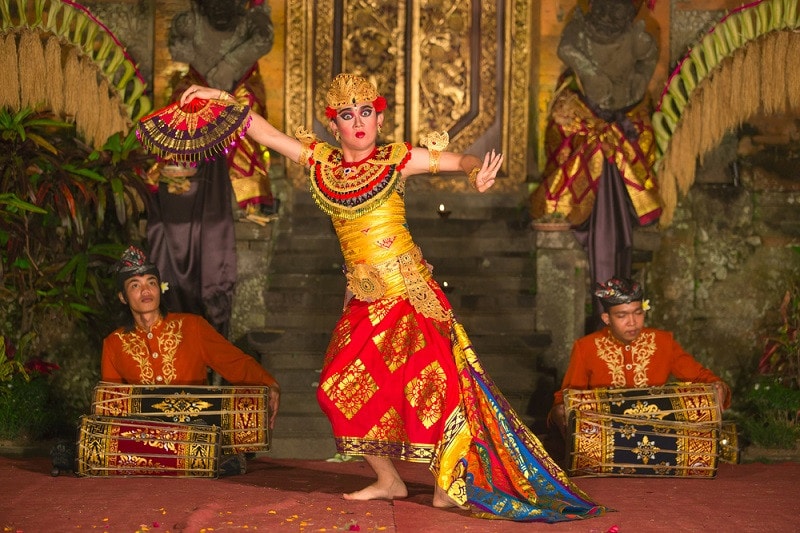
Source : thejakartapost.com
Dance is an integral part of gamelan performances, adding a visual dimension to the music and enhancing the storytelling aspect. Traditional Balinese dance performances are closely intertwined with gamelan music, creating a unified performance art that reflects cultural rituals.
Let’s explore two of the most iconic Balinese dances: the Legong and the Barong.
Legong Dance
The Legong dance performances are a traditional Balinese dance that showcases grace and beauty, often performed by young girls as part of cultural ceremonies. This dance is characterised by its intricate movements and expressive gestures, which are perfectly synchronised with the gamelan musical ensemble. The Legong dance is commonly performed during temple festivals and other religious events, highlighting its importance in Balinese cultural practices.
The intricate relationship between the Legong dance and gamelan music enhances both art forms, creating a vibrant and immersive cultural experience. The fluid, graceful movements of the dancers, combined with the rich, dynamic sounds of the gamelan, captivate audiences and bring the stories to life.
Barong Dance
The Barong dance is a traditional Balinese dance performance that symbolises the universal struggle between good and evil. The Barong represents the spirit of good and is often associated with the mythological guru who helps protect people from the demonic forces represented by the Rangda. The dance is accompanied by a gamelan orchestra, which provides rhythmic and melodic support, enhancing the storytelling aspect of the performance.
Gamelan music in the Barong dance incorporates fast-paced rhythms and interlocking melodic patterns, which are essential in emphasising the dance’s dramatic movements. The dynamic rhythms and vibrant sounds of the gamelan bring the mythological stories and cultural themes to life, creating a powerful and engaging performance.
Preserving Balinese Gamelan Traditions
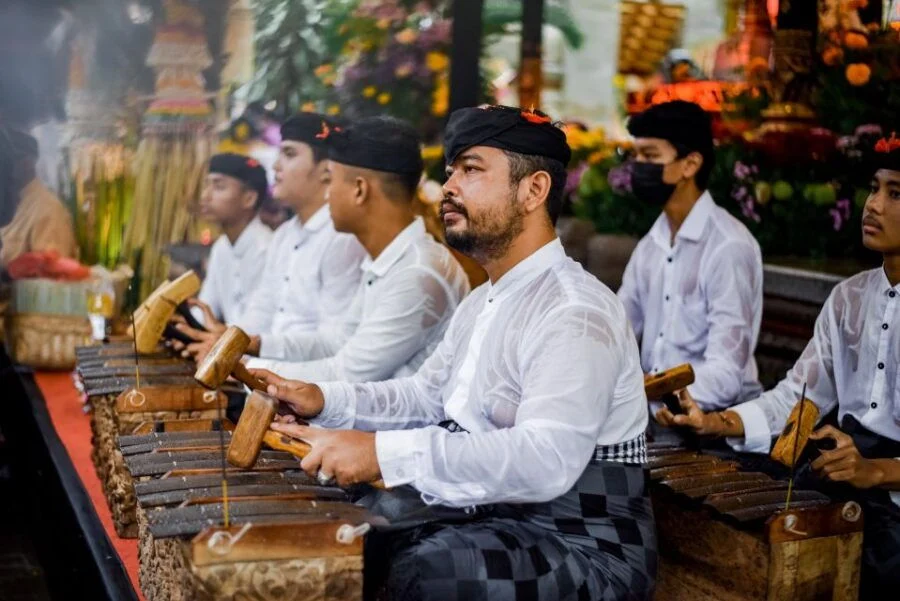
Source : Veronikasadventure.com
Preserving Balinese gamelan traditions is crucial for maintaining the cultural heritage of the island. This is achieved through various community practices and local rituals that are central to Balinese Hindu culture.
Let’s explore the roles of education and training, and cultural festivals in preserving these traditions.
Education and Training
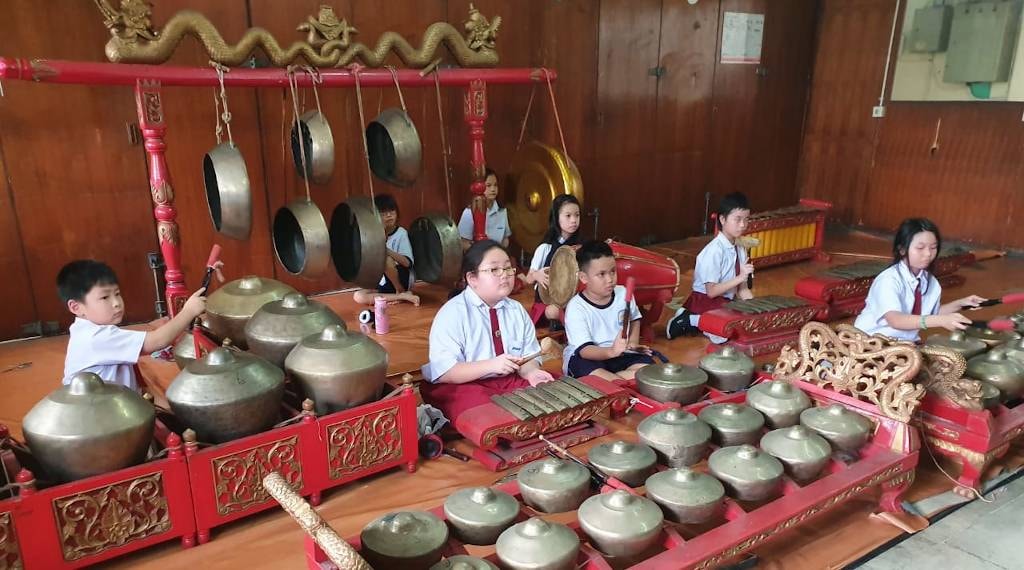
Source: tarsisius1.sch.id
Education and training play a vital role in preserving Balinese gamelan traditions. Every village in Bali typically has multiple music clubs that rehearse regularly for temple festivals and performances. Young Balinese children are often encouraged to participate in local gamelan bands known as sekaa gong, fostering early music education. These daily group practices help children develop coordination and rhythmic skills, ensuring the continuity of Indonesian gamelan music.
Programs that combine traditional learning with modern technology can enhance the education of gamelan music by providing access to instrumental parts for practice. Groups of musicians in Bali are organised by age and gender and regularly rehearse to prepare for performances, maintaining a high level of musical proficiency and cultural engagement.
Cultural Festivals
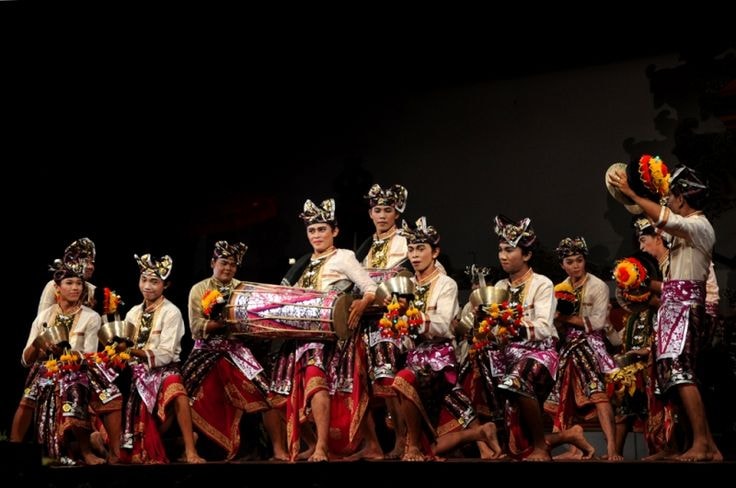
Source : pinterest.com
Cultural festivals play a crucial role in keeping Balinese traditions alive and passing them on to future generations. These festivals provide a platform for Balinese gamelan orchestras, enhancing the spiritual ambiance of ceremonies and creating a deep connection between participants and spectators. Through its vibrant sounds and rhythms, gamelan keeps the cultural festivals of Bali energetic and engaging, ensuring that traditions remain an exciting part of community life.
The celebration of Balinese culture through these festivals helps to maintain and promote gamelan traditions, fostering a sense of pride and continuity among the community. These events provide an opportunity for both locals and visitors to experience the intangible cultural heritage of Bali, ensuring that the vibrant sounds of gamelan continue to resonate for generations to come.
Summary
Balinese Gamelan is a vibrant and dynamic musical tradition that is deeply intertwined with the cultural and spiritual life of Bali. From its unique musical instruments and fast-paced rhythms to its integral role in ceremonies and rituals, gamelan music offers a rich auditory experience that captivates and inspires. The various types of gamelan ensembles, each with their distinct characteristics, reflect the diversity and adaptability of this traditional music.
The influence of Balinese gamelan extends beyond the Indonesian archipelago, impacting modern music and enriching various genres. The preservation of gamelan traditions through education, training, and cultural festivals ensures that this vibrant music continues to thrive and evolve. As we celebrate the timeless beauty of Balinese gamelan, we are reminded of the importance of preserving and promoting cultural heritage for future generations.
Frequently Asked Questions
What is Balinese gamelan?
Balinese gamelan is a traditional Indonesian music genre that features a distinctive ensemble of percussion instruments, predominantly gongs and metallophones, which produce vibrant sounds integral to Balinese ceremonies and celebrations.
How does Balinese gamelan differ from Javanese gamelan?
Balinese gamelan is characterised by its vigorous rhythms and energetic sound, while Javanese gamelan tends to have gentler tones and a more subdued style.
What role does gamelan play in Balinese ceremonies?
Gamelan music plays a crucial role in Balinese ceremonies by enhancing the spiritual atmosphere and fostering a connection between participants and their deities, thereby reinforcing cultural traditions.
How is Balinese gamelan being preserved?
Gamelan in Bali s preserved through community practices, education, training, and cultural festivals that encourage early music education and enhance cultural engagement. This multifaceted approach ensures the continuation of this rich musical tradition.
Where can I experience live Balinese Gamelan performances?
You can experience live Balinese gamelan performances at notable venues including Ubud Water Palace, Ubud Palace, and Tanah Lot Temple, which host nightly shows and cultural events.
Immerse yourself in Bali’s rich cultural heritage with Bali Res Centre. Let them arrange a private car and driver to escort you to any of the island’s magnificent palaces and temples, ensuring you experience this unforgettable cultural journey. Let them handle the logistics while you embrace the beauty and history of Bali’s sacred sites.

